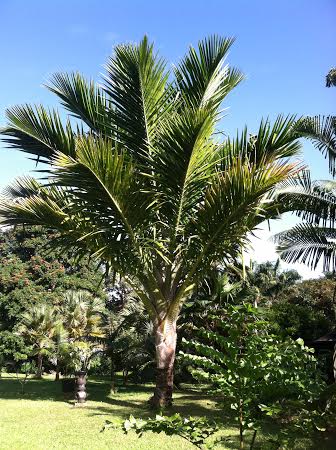This specimen of Dypsis onilahensis came to me as a seed in April, 2005. It was placed in a 1 gallon pot as a seedling for about a year and a half before it was transplanted into this 15 gallon pot where it’s been ever since, about three years now.
I shared this photo with members of the Palmtalk Forum of the International Palm Society and was advised that this palm would probably grow considerably larger if placed in the ground. It is a cousin to what we call Areca Palm or Family Palm or Butterfly Palm, which is technically Dypsis lutescens. If you know what Areca Palms look like, then you can see that this D. onilahensis is a bonzai version of what it would normally look like at this age. I have another D. onilahensis, smaller one of the same age, that I planted in the ground to see if it would indeed blossom into a full sized palm. I’m going to keep this one in the 15 gallon pot.
Fast forward to 2017: the smaller specimen died shortly after being planted in the ground in a shady spot.
The larger one stayed in the 15 gallon pot until 2015. It hadn’t grown much beyond what is seen in the photos above. It died after it was planted in the ground at the same spot where it had been sitting in the pot for years.
I have just potted a few D. lutescens seedlings. I’m going to see if I can get a bonzai out of a couple of them by keeping them in small pots and pruning the roots. Somehow I don’t think D. lutescens will stay small.


















